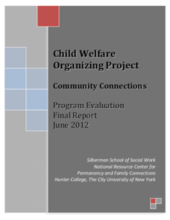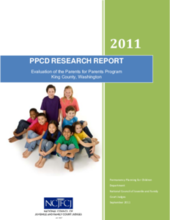This section highlights resources focused on the participation of parents and caregivers in decisions about children's care, including decisions about their own children and their placement in alternative care, as well as advocacy efforts to reform systems of care and protection for children.
Displaying 91 - 98 of 98
Helping families and their kin develop care plans for orphaned and vulnerable children was the objective of the family group conferencing (FGC) training that took place in Guatemala City from July 10-12, 2012. This family preservation approach for developing strategies to prevent the institutionalization of children emphasizes the strengths of families and their capacity to solve their own problems and develop their own care plans.
This evaluation study was conducted in an effort to learn more about the innovative parent organizing model implemented by the Child Welfare Organizing Project (CWOP) in East Harlem, New York City and identify the role and impact of CWOP community representatives on birthparents, families, and child safety conference outcomes.
This study examines the Parent Partner program, which employs parents with lived experience of child removal to support families in the reunification process. Findings suggest that children whose parents worked with Parent Partners were more likely to be safely reunified, indicating the model’s potential as an effective child welfare intervention.
This process evaluation of the King County Parents for Parents Program (P4P) examines the program’s efficacy and suggests areas for continued improvement.
This article describes several parent partner/advocate programs operating around the United States, including programs that train parents to serve as parent mentors and programs that train parent leaders to sit at the decision-making table and influence child welfare policy.
The current assessment is the fourth in a series of independent assessments examining core systemic issues in Michigan’s child protection system.
This issue of A Closer Look examines:
The resources on this page address ways to advocate for families in the U.S. and include State and local examples.







